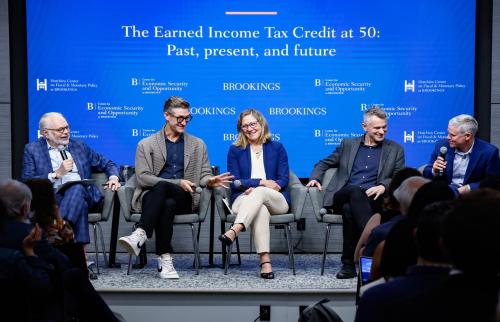This article originally appeared in The London School of Economics and Political Science blog British Politics and Policy on July 25, 2017.
Generations of British and American children have benefited from their parents’ hard work, which has contributed to many decades of strong economic growth. This has helped to ensure that, on average, children in their adult lives are economically better-off than their parents were at the same age.
But growth has now been weaker for many years. The absolute upward mobility taken for granted in the past, fueled by the creation of “more room at the top”, is now in peril. At the same time, the hardening of class barriers – including a “glass floor” protecting the affluent from downward mobility – means that opportunities for less advantaged children may be curtailed still further.
Less ‘room at the top’
Over the last few decades, economic growth has been accompanied by an expansion in the number of well-paid, high-status jobs. In other words, “more room at the top”. In both the US and the UK, skilled-biased technological change, globalization, and increases in educational attainment, particularly the number and share of graduates in the workforce, have all fueled this expansion at the top of the labour market.
With more opportunities for education and for good jobs, children from less advantaged backgrounds have found it easier to progress and do well. At the same time, the odds of improving on the relative status of parents has not changed significantly, and may even have declined in both nations. In social mobility terms, both countries saw increases in absolute mobility which were not matched by increases in relative mobility.
A slow-down in economic growth following the financial crisis of 2007/08 contributed to stagnating and in some cases falling real wages. At best, limited growth in income and wealth among younger generations characterize a growing generational divide. Absolute mobility rates are falling, as recent work by Ray Chetty and his colleagues shows for the US. The UK’s Social Mobility Commission highlights recent evidence of younger generations (born in the 1960s, 1970s and early 1980s) failing to achieve the average levels of income enjoyed by previous cohorts at the same age.
The “glass floor”
The idea of social mobility usually refers to upward mobility, or the lack of it, for children from less advantaged family backgrounds. But there is another side to social mobility, largely neglected: downward mobility, or the lack of it, for children from more advantaged family backgrounds. Each of us has conducted research showing that in the UK and in the US, children from advantaged families are protected from downward mobility. We even find that, on average, less able children from better-off families do better, in terms of income and earnings, than more able children from poorer ones.
The result is that children from better-off families are effectively able to hoard the best opportunities in the labor market, limiting the opportunity for upward relative mobility for children from less advantaged family backgrounds.
In the case of the UK, we are able to unpack this a bit and identify which factors help prevent children from advantaged families from experiencing downward mobility. The evidence shows that these families have been in a better position to help their children improve their cognitive skills (particularly maths skills) and gain more social and emotional skills (‘soft skills’). Higher levels of parental education, a greater chance of attending a grammar or private fee-paying school, and gaining a higher education are all important factors that contribute to the greater chance of success for initially low achieving children from advantaged families.
In the US, there is similar evidence for the importance of cultivating “soft skills” to maintain status, as well as a strong role for higher education. Among those who might have been expected, based on their adolescent cognitive skill levels, to fall down the income ladder, the acquisition of a college degree was the most important protective factor, or glass floor.
Less room at the top + a glass floor = bad news for mobility
Policymakers commonly turn to education policy when looking to improve social mobility. By helping children’s earnings or income to surpass their parents’, educational attainment can be an effective strategy for boosting absolute social mobility. However, in both the US and UK, i) economic inequality is high; ii) economic resources help to secure higher levels of educational attainment; and iii) educational wage premiums are sizeable. Under these conditions, better-off families are in a strong position to maintain their advantage through maintaining education inequalities.
In an education race between the State and wealthy families, it is unlikely that the State will win. It simply doesn’t have the resources to invest in the education of less advantaged children to match what wealthy families have at their disposal. This means that to improve relative social mobility (the relationship between children’s and parents’ relative earnings or income is weakened) policymakers interested in improving social mobility may need to take more radical steps to reduce economic inequality.
Our research sends out a stark message that opportunity hoarding and limited downward social mobility mean that better-off families will continue to ensure that their children occupy the top slots in the labor market. Without further expansion of well-paid jobs, the opportunity of upward mobility for children from less advantaged family backgrounds will thus be limited further.
The Brookings Institution is committed to quality, independence, and impact.
We are supported by a diverse array of funders. In line with our values and policies, each Brookings publication represents the sole views of its author(s).






Commentary
Glass floors and slow growth: A recipe for deepening inequality and hampering social mobility
July 26, 2017